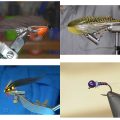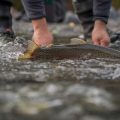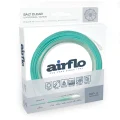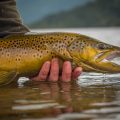Talking Streamers with Kelly Galloup
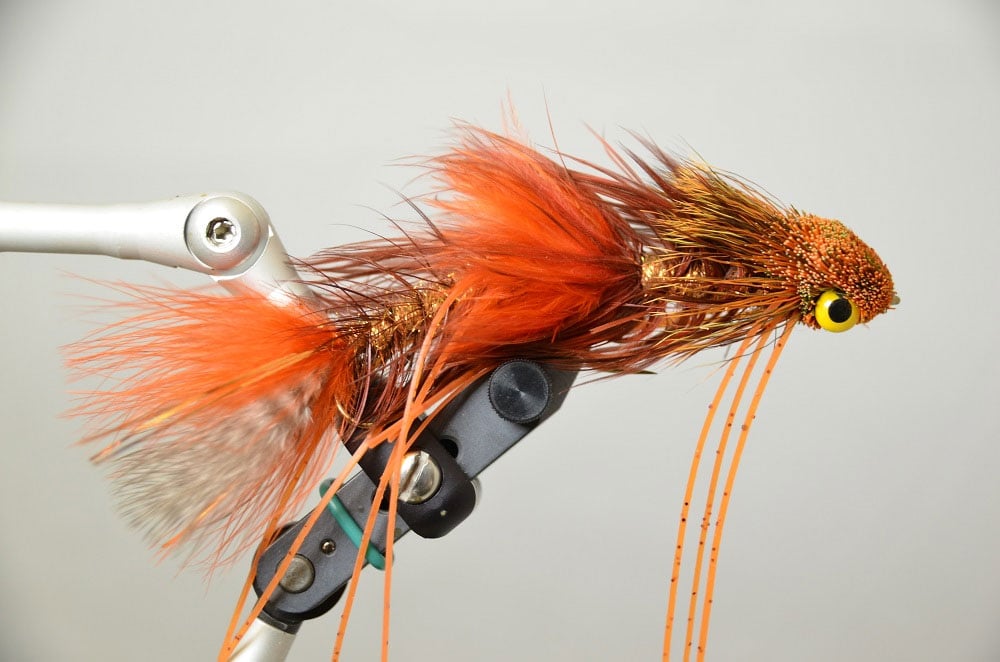
Kelly Galloup’s Sex Dungeon streamer
Sex Dungeons. Butt Monkeys. Stacked Blondes. Barely Legals. Bodacious names aside, Kelly Galloup’s flies have changed the face (and attitude) of modern fly fishing. This week I caught up with Kelly as he put the finishing touches on his latest book, Streamers II, the technical sequel to Modern Flies for Trophy Trout, one of the best-selling and most influential fly fishing books of all time. Kelly and I talked about the early days of streamer design, the problem with most new big fly patterns, how to choose the right line for the job, and how to become a better streamer angler faster.
MC: It seems that just about everyone is fishing streamers these days. What was it like in the early days when you were developing these flies, reaction theories and presentation techniques?
KG: It was a whole different world. Back then, everyone who fished streamers—and there weren’t many of them—began with the idea that the first step to building a streamer was literally to wrap as much lead as you could get onto a hook and still have a gap. They weren’t designed to swim, they were designed to be dead-drifted or dredged. They dropped vertically in the water column, and that really bothered me. Nothing in nature drops vertically in the water column. Absolutely nothing. The idea with the neutrally weighted flies that I developed was that when you stopped imparting action to the fly with your rod, any current available was there to make the fly move, flutter, like a dying baitfish. The flies I designed moved with either a vertical or lateral serpentine movement. They didn’t drop vertically in the water column. They followed the sinking line to get down.
My discovery of that reaction bite came from the reality of the water we were fishing. Most of the early stuff was done on the rivers of Michigan. For the most part we were fishing where there wasn’t all that much water. On those river systems we had a 10-strip retrieve if we were lucky. There wasn’t time to work a fish for a long time. So we had to figure out how to trigger them in a very short amount of time. It’s that small window of opportunity that really gave rise to the streamer system I developed: fishing fast, fishing hard, changing flies every five minutes until you find something that works.
MC: Let’s talk about lines. What factors do you take into account when deciding between a sinking, floating or intermediate line?
KG: Well, first off, I never fish an intermediate line—it’s always either a floating or a sinking line. And it’s a sinking line a vast, vast, majority of the time. This is all due to castability. It’s a fact that anyone, beginner, advanced or intermediate, can throw a sinking line better and more efficiently and accurately than they can a floating line.
It’s basic physics. The sinking lines carry a bigger fly more efficiently than a floating line. In most fly fishing situations, your line weighs more than your fly. Not so when you’re throwing a 7 inch Sex Dungeon. Conventional fly casting physics go out the window, and casting becomes less about elegance and more about efficiency. When fishing large streamers to trophy trout, we’re doing a lot of repetitive casting over and over and over. It’s generally a fast retrieve over short to medium distances. And then we do it again. And again, and again. Even with the absolute best floating lines out there, that type of fishing is a hard operation.
There are two exceptions. I’ll go to a floating line in some wading situations and also when fishing very small spring creeks. A floating line is the best choice for upstream presentations in relatively shallow water—three feet or less—where the active portion of your retrieve is going to be less than ten feet. With the water coming at you, a sinking line is going to be a difficult thing to manage. On small, quiet spring creeks, a floating line and long leader is going to permit a stealthier approach. You’re usually running smaller flies in that case anyway—leechy style stuff and smaller sculpins.
MC: What do you think about the explosion of new streamer patterns today?
KG: In the business today, there are a lot of people tying streamers, but they’re just not testing them enough. I don’t just sit down and build something at random. I don’t tie a fly and put it on Facebook. I tie a fly and fish it for a year and refine it.
My streamers are designed to swim in a specific style. To move like something natural and living in the water column, a fly should accelerate in the rear end and stall in the front. This means materials in the head that slow the flow of water over the fly, and materials in the tail that speed it up. Those are the basic physics of successful streamer design.
MC: To call what we’re experiencing in much of the country right now winter is an understatement, but there are still opportunities to fish. How does your approach to fishing streamers change in the winter?
KG: Well, first off I don’t start too early in the morning. The second thing is I’m generally more food-based. This doesn’t mean that I necessarily start with a food-based fly; it just means I’m more likely to end up having fish respond to one. I still start with big, fast, in-youf-face flies to see if the fish will respond. Then I’ll step down to slower presentations and more natural colors if the fish don’t play my game. All in all, my best winter colors tend to be more natural: dark olives, browns, blacks, greys.
MC: What’s the one thing everyone can do to become a better streamer angler in the least amount of time?
KG: Change your fly early and often. I change my fly every five minutes until I find something that works. By paying close attention you’ll notice patterns and tendencies, not just on a give day, but on a given river system. It’s a fact that fish in different river systems have different tendencies. Your job as a streamer angler is to discovery what these tendencies are. I have one river I fish out here in Montana where you are guaranteed to catch fish on a white fly. White’s got their number like no other color has it. On another river about two hours away, you almost never move a fish on white. Communities of predatory fish take on identities and preferences particular to the river system—and it only sometimes has to do with forage fish. It’s your job to figure that out.
MC: When can anglers expect Streamers II to be available?
KG: We’re in the final stages and aiming for a spring release. One of the last things we’re working on is building a body of great photography for the cover and interior pages. Because we want this book to really showcase the greatness of streamer fishing, we’re asking anglers from around the country to share their best trophy shots. If any anglers out there have great images they want to share in the book, they should get in touch with me through my website.








